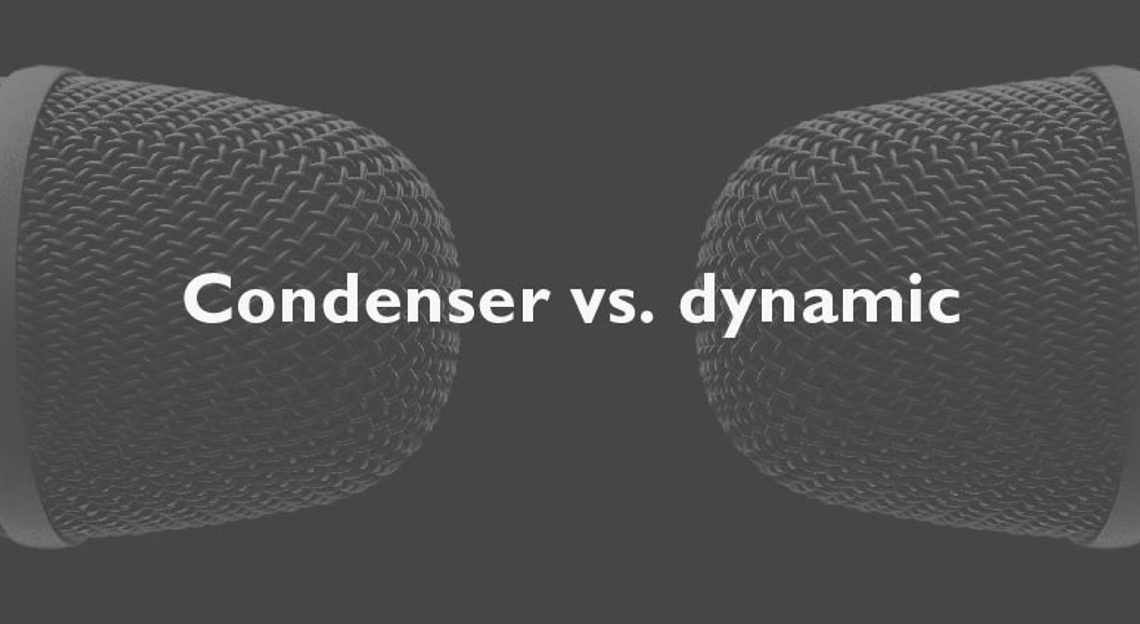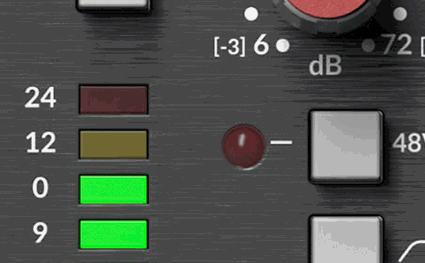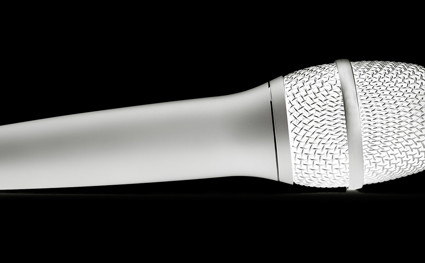10+ statements on condenser microphones versus dynamic mics
This article describes some common misunderstandings regarding dynamic versus condenser mics. It explains why condenser microphones are useful in many situations where dynamic microphones, per tradition, have been preferred.

Discussion about the difference between dynamic microphones and condenser microphones never ends. To that end, we must clarify a few things: The difference between dynamic microphones and condensers is all about two different transducer principles. It has nothing to do with the directional characteristics of the microphones. So the following questions are not valid: ‘What kind of directional characteristic does a dynamic microphone have?’ or ‘Which one is more directional, the dynamic or the condenser?’
Instead, dynamic versus condenser is actually a matter of transducer principles. Both dynamic and condenser microphones have a membrane that vibrates in accordance with the air movement around it, also known as the sound. The microphone must then transform this membrane movement from acoustical energy into electrical energy. This is where the transducer comes into the picture and each type of microphone has different transducer properties.
Now for the 10+ statements and whether they are true or not…
Dynamic microphones are more robust than condensers (not necessarily true)
Many microphones have a delicate design intended for use in studios. This goes for both dynamic microphones and condenser microphones. Occasionally, some of these delicate microphones will hit the road with musicians. A microphone design that was fine for the studio may seem too fragile for touring. This may, for instance, apply to microphones equipped with tubes and other delicate internal components. This is not the case with high-quality solid state condenser microphones, which can manage the rough handling as well as any robust dynamic microphone. In fact, the lightweight membrane of the condenser microphone often survives heavy beats and drops better than the dynamic, moving-coil microphone. This is due to the mass of the dynamic microphone’s membrane system, which is attached to a coil. (The dynamic microphone also hits the floor harder because it is heavier.)
Dynamic microphones do not need a power supply (partially true)
The vast majority of dynamic microphones can manage without power but there are some exceptions. Basically, all condenser microphones need some kind of power supply. This is primarily to supply the impedance converter and for non-electret condensers to charge the electrodes (membrane and back electrode). Active dynamic microphones need a power supply as well.
Condenser microphones are louder than dynamic microphones (not true)
No, one microphone is not louder than another; it is just a question of sensitivity. In general, condenser microphones exhibit a higher sensitivity than dynamic microphones. Either way, the sensitivity should always be chosen relative to the requirements of the job. In other words, if the microphone has to handle very high sound pressure levels (SPL), it is best to select a unit with a low sensitivity – whether it is a condenser or a dynamic microphone.
It is easier to mike up the band using dynamic microphones (not true)
This statement is more related to tradition and laziness than it is related to fact. No matter what you choose, you have to consider the specs and the application.
In some cases it is argued that the frequency range or the opening angle is too wide. Well, sometimes it is actually easier to reduce bandwidth on a condenser than it is to equalize a dynamic microphone. In general, the directional characteristics of the condenser microphones are at least as good as can be achieved by any dynamic microphone. But, as always, it’s important to pick the right microphone for the job no matter what transducer it may have.
Condensers feed more easily than dynamics (not necessarily true)
As with many of the previous statements, this is simply a question of choosing the right microphone. One basic error often made is selecting a condenser microphone that is developed for recording at a distance. When amplified, this may result in low-frequency feed. Instead, use a low-cut/high-pass or pick a microphone that is designed for stage use.
Dynamic microphones can handle higher sound pressure levels than condenser microphones (not true)
Condensers can, in general, handle extremely high sound pressure levels. The question instead is whether the mike preamp can handle all the juice coming out of the microphone.
An extremely loud singer can produce a sound pressure peak level in the range of 150 dB, measured at the lips. If you have two microphones with a sensitivity of 1 mV and 10 mV respectively (what comes out of the microphone when exposed to a sound pressure level of 94 dB re 20 μPa), you have outputs of 0.63 and 6.3 volt peak! Signals of this magnitude should instead be handled by the line input or the signal should be attenuated in some way.
Dynamic microphones change sound in dependence of the load (sometimes true)
This is actually true regarding passive dynamic microphones terminated by very low impedance. (Rule to remember: the microphone should be terminated with a load that is at least five to 10 times higher than the output impedance of the microphone.) This is due to the physics of the moving coil. A heavy load (= low Ω) acts more or less as a short circuit and reduces the low frequency output of the microphone. Eventually, high frequencies may also be reduced. This is normally only a problem with very poor mixer designs. However, making passive splits – one microphone to two or more inputs – may result in the same problem.
It is cheaper to use dynamic microphones than it is to use condenser microphones (somewhat true)
If the goal for the use of the microphone is to destroy it, then go ahead and purchase the cheapest one possible. If your goal is to reduce the costs of replacing equipment, which is exposed to rigorous or rough use, you may find it better to use a $100 microphone rather than a $1000 version. This is certainly better for economic reasons, but in the end you will probably lose sound quality.
People only buy condensers as a result of the Veblen effect (sometimes true)
Veblen effect: when people buy expensive stuff when they could instead buy cheaper versions. In audio, the Veblen effect exists for users who are trying to achieve prestige by spending more money than they should. However, when audio engineers consider their budgets and requirements, most will buy the product that fulfills their needs in the most cost-effective manner possible.
I don’t need condensers because my PA is perfect (not necessarily true)
If the rest of the PA/SR system is first class, why shouldn’t the microphones be first class as well?
The phase of a condenser's signal is different from that of a dynamic (true)
That is correct. The waveform of the output of a condenser microphone is directly related to the sound pressure of the sound wave. The waveform of the dynamic microphone is related to the velocity of the sound wave. When the pressure hits the peak, the speed of the air molecules is zero. At this point, the condenser signal is at max, and the dynamic signal is zero.
In general, there is a 90° difference between the signals from a condenser and a dynamic microphone. Hence impulse responses are not directly comparable.
Dynamic microphones are the most stable regarding sensitivity (wrong)
In general, dynamic microphones are more sensitive to temperature / humidity variations, which lead to variation of the sensitivity.
Dynamic mics and induction loops don't like each other (mostly true)
In most dynamic microphones a coil is an essential part of the tranducer system. However, a coil is also the perfect choice for the pick up of electromagnetic fields, for example induction loops installed for hearing aid users. Sometimes when using dynamic mics, a PA / SR system feeds even without the loudspeakers being turned on. Only dynamic microphones with a built in "noise coil" − a reversed coil placed close to the one producing the signal − can reduce the problem. However, many popular dynamic microphones do not have this noise coil.
Condenser microphones are, in general, not sensitive to the electromagnetic fields.


